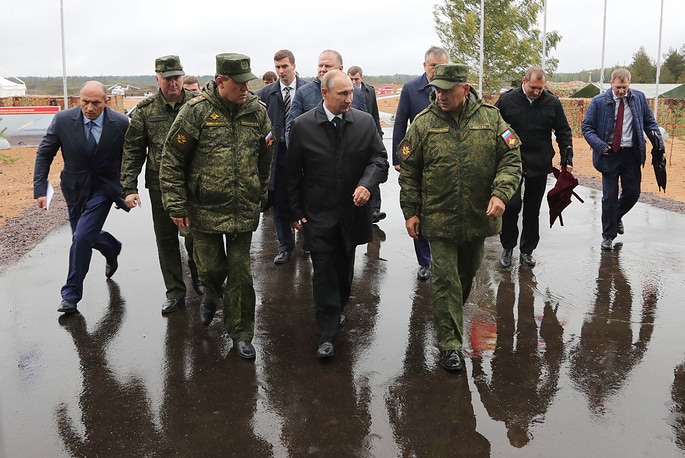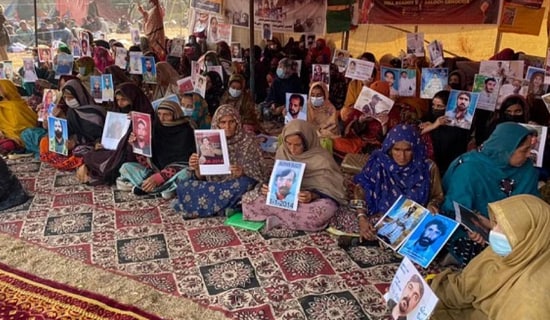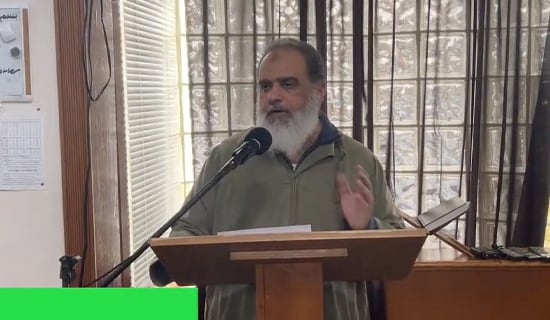Russia This Week is a weekly review by the MEMRI Russian Media Studies Project, covering the latest Russia-related news and analysis from media in Russia, the Caucasus, Central Asia, and Eastern Europe.

Photo Of The Week

In The News
Zapad-2017 Drills
Zapad-2017 Exercises An Embarrassment For Belarus As Fictional State Achieves A Life Of Its Own
The independent media outlet Belarus Digest published an article, titled "Viejšnoryja: The Belarusian Defense Ministry Plays With Fire," by Belorussian political analyst Dzmitry Mitskevich.[1] The article emphasizes that the Russian and Belarusian authorities are trolling the Baltic States in the September 14-20 Zapad-2017 exercises. The Russian and Belarus forces participating in Zapad-2017 are reacting to a scenario, in which extremists, supported by two neighboring states, invade and then occupy the western part of Belarus, where they establish a separate state called Viejšnoryja. This new state is propped up by its two western neighbours: Viesbaryja and Lubienija. According to Mitskevich, this trio of Baltic sounding countries is no coincidence: "Viejšnoryja itself is the Belarusian part of Lithuania Propria – a historical region and the cradle of the Grand Duchy of Lithuania… What's more, Viejšnoryja coincides suspiciously with the Catholic-majority part of Belarus."
Mitskevich also notes that some experts considered the choice of Viejšnoryja, an attempt to split the Belarusian population along religious lines: the Catholic West against the Orthodox 'Russian world.' "The fact that two neighboring states were supporting 'Viejšnorian extremists' was also taken to symbolize NATO destabilizing the situation in Belarus in order to 'break it apart from its union with Russia'," writes the author. The scenario proved to be an own goal as the fictional Viejšnoryja became a rallying point for the Belarus opposition, which used the social media to endow the entity with its own flag, currency and even a coat of arms .
See MEMRI Special Dispatch No. 7094, Zapad-2017 Exercises An Embarrassment For Belarus As Fictional State Achieves A Life Of Its Own, September 15, 2017.

Map of exercise and forces involved (Source: Delfi.lt)
Pravda.ru: "Helicopters Of Russia And Belarus Destroy NATO Air Defenses"
On September 18, the Russian news agency Tass.com reported that "tactical aircraft bombed the hypothetical enemy in cloudy and drizzly weather. Mi-8, Mi-28N and Ka-52 helicopters delivered air borne assault teams to the site of the operation and provided air protection for advancing forces on the ground." Furthermore, a group of Ilyushin-76 planes parachuted a tactical assault force, while Sukhoi-35 fighters were protecting the airdrop operation.
Tass.com also specified: "To destroy the most sensitive facilities and command centers of the hypothetical enemy supersonic bombers Tupolev-22M3 carried out bombing strikes. Iskander-M and Tochka-U tactical systems launched missiles. Super-heavy artillery and self-propelled guns hit crucial enemy facilities with high accuracy Krasnopol and Smelchak shells. Drones and laser range finders provided the coordinates."
(Tass.com, September 18, 2017)
The true identity of the conventional enemy targeted by the exercise was mentioned by the Russian media outlet Pravda.ru, which dispensed with euphemisms such as Viejšnoryja and wrote plainly "Helicopters of Russia and Belarus destroy NATO air defenses."
SUPPORT OUR WORK

(Pravdareport.com, September 18, 2017)

Russian Minister Sergey Shoigu during Zapad-2017 (Source: Niezalezna.pl)
Weapons And Military Hardware
During the drills, a modernized Iskander-M missile was launched at the maximum range, hitting a target in Kazakhstan.
(Tass.com, September 18, 2017)
New types of weapons and military hardware were used during the drills. Tass.com reported: "Among the weapons and vehicles used during the drills are the Kaiman armored transport vehicle armed with a machinegun module, the Shershen anti-tank missile system mounted on the V-1 light-armor car, the Moskit unmanned aviation system, and the Polonez multiple missile launcher system.
"The Belarus-made Kaiman mobile armored transport vehicle is meant for reconnaissance and subversive missions, patrolling and escorting convoys, peacekeeping and police operations. The vehicle is capable of developing a velocity of up to 110 kilometers per hour, moving across country, crossing water obstacles and swimming at a speed of up to eight kilometers per hour.
"The Polonez multiple missile launcher system is meant for high precision fire at manpower, including sheltered, non-armored and armored military vehicles, artillery and missiles systems, aircraft at airdromes and other targets at a distance from 50 to 200 kilometers. Missiles fired from one Polonez system can hit eight targets at a time, with deviations from assigned coordinates at a maximum distance being below 30 meters."
(Tass.com, September 17, 2017)

Zapad-2017 (Source: Niezalezna.pl)
Lithuania Accuses Russia Of Violating Airspace
The Russian Ambassador to Lithuania Alexander Udaltsov was summoned to the Ministry of Foreign Affairs of Lithuania and was handed a diplomatic note over a violation of the Lithuanian airspace.
(Urm.lt, September 18, 2017)
The Lithuanian authorities stated that during the Zapad-2017 drills Russian Il-76 planes intentionally violated its airspace on September 16. According to Vilnius, the two Russian planes had stayed in the Lithuanian airspace for two minutes. The Russian Defense Ministry veered from a categorical dismissal of the accusations "We regard the claims of the Lithuanian side about the alleged intentional violation of airspace by Russian airspace as part of the West-2017 exercise as politicized and untrue" to a statement reported by Tass.com:
"the planes were on a planned flight from the city of Taganrog in Russia’s southern Rostov region to the city of Chernyakhovsk in the westernmost Kaliningrad region. While flying over the Baltic Sea’s neutral waters, the planes’ crews detected a storm front about 20 kilometers wide and some 60 kilometers long, which posed a threat to the planes’ and the crews’ safety."
(Tass.com, September 18, 2017)
It is possible to read into the latter statement an admission that there was at least some validity to the accusation.
Polish Defense Minister: Putin Wants To Intimidate The West And Poland
Referring to the Zapad-2017 drills, Defense Minister Antoni Macierewicz said that Russian President Vladimir Putin "wants to intimidate the West, intimidate Poland, but nothing will come of it." He also stated that the drills have been planned "so that from exercises they can move directly to combat operations." He also noted that political conditions do not make combat operations possible, but "military conditions do allow it."
(Thenews.pl, September 15, 2017)
China-Russia Naval Drills
Russia and China will start coastal drills near North Korea, in Vladivostok from September 18-21. Sea exercises will take place in waters near Vladivostok and in the Sea of Okhotsk from September 22 to 26. The drills are the second part of China-Russian naval exercises in 2017, the first of which took place in the Baltic in July.
(Scmp.com, September 18, 2017).
In the context of recent nuclear and missile tests by North Korea, the drill although planned in advance assumes symbolic as well as military importance.
Russia-Moldova Relations
On September 17, Russian Federation Council Speaker Valentina Matvienko said at a meeting with the pro-Russian Moldovan President Igor Dodon: "There is a trend towards improved [Russia-Moldova] relations, and it is largely thanks to you, as the president, who fulfills the promises made to the people: expand, improve a mutually beneficial partnership with Russia… Although we understand the situation is not simple and it is moving forward with difficulty." It is worth noting that confrontations continue between the pro-European Moldovan government and the Moldovan presidency, after Dodon used his presidential powers to block the pro-European Eugen Sturza's candidacy for the post of defense minister.
(Sputniknews.com, September 17, 2017; Zdg.md, September 18, 2017 )
See MEMRI Special Dispatch No. 7058, Russia's Orbit – Russia's Deputy PM Rogozin Declared Persona Non Grata In Moldova, August 18, 2017.
News In Brief:
- On September 17, Foreign Minister Sergey Lavrov met with U.S. Secretary of State Rex Tillerson in New York. (Mid.ru, September 18, 2017)
- On September 14, Foreign Minister Sergey Lavrov spoke by phone with US Secretary of State Rex Tillerson at the U.S. initiative. The ministers discussed the future of Russian-US cooperation to settle the Syrian conflict. (Mid.ru, September 14, 2017)
- Joint statement by Iran, Russia and Turkey on the International Meeting on Syria in Astana 14-15 September 2017. Iran, Russia and Turkey are guarantors of the observance of the ceasefire regime in Syria. (Mid.ru, September 18; See full statement)
- On Septembet 13, Lavrov met with Iran's FM Javad Zarif in Sochi. After the meeting, Lavrov stated: "We considered the situation regarding the implementation of the Joint Comprehensive Plan of Action on the Iranian nuclear program. The Russian side, as well as IAEA Director General Yukiya Amano, attest to Iran's full compliance with all its obligations." (Source: Mid.ru, September 13, 2017)




